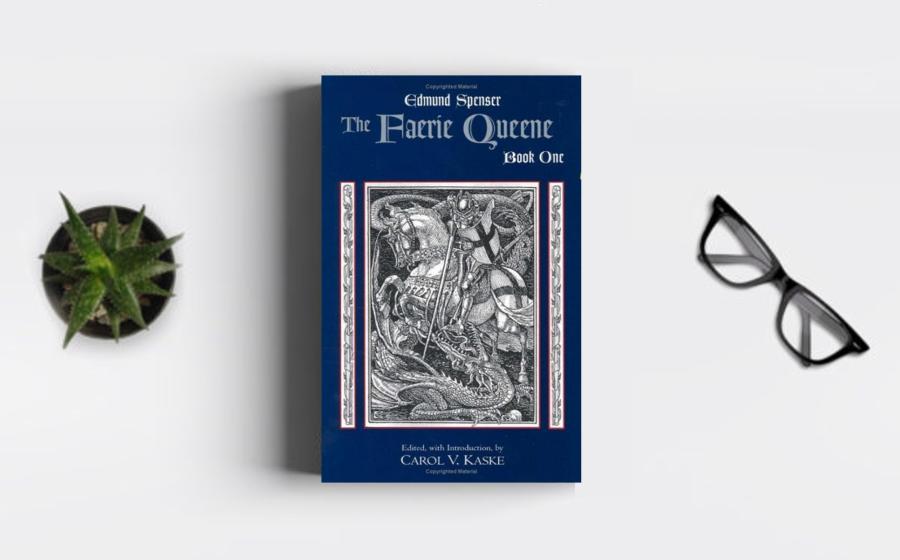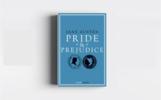"The Faerie Queene" stands as a monumental work in
English literature, capturing the essence of the
Renaissance era and providing a timeless exploration of
allegory, virtue, and chivalry. Composed in the late
16th century, this epic poem unfolds across six books,
each dedicated to a specific virtue, and remains a
testament to Spenser's mastery of language, intricate
allegorical symbolism, and the enduring themes that have
secured its status as a time-tested epic.
At its
heart, "The Faerie Queene" is a complex narrative that
weaves together the stories of knights and damsels,
drawing heavily on the chivalric tradition while
infusing it with allegorical layers that explore moral
and spiritual dimensions. The epic follows the quests of
several knights, each representing a specific virtue, as
they navigate a fantastical landscape fraught with
challenges and adversaries. The overarching framework of
the narrative is the quest to win the favor of Gloriana,
the Faerie Queene, who personifies Queen Elizabeth I and
the ideals of the Elizabethan era.
The enduring
appeal of "The Faerie Queene" lies in its allegorical
depth, a characteristic that distinguishes it as a
time-tested epic. Spenser employs intricate symbolism to
imbue the narrative with layers of meaning, making each
character, setting, and event a vessel for moral and
political commentary. The allegorical framework allows
readers to engage with the text on multiple levels,
uncovering hidden meanings and drawing connections
between the fantastical world of Faerieland and the
socio-political context of Spenser's time.
The
epic's dedication to exploring individual virtues adds
to its time-tested significance. Each book of "The
Faerie Queene" is devoted to a specific virtue, such as
Holiness, Temperance, Chastity, Friendship, Justice, and
Courtesy. Through the adventures of the knights
associated with these virtues, Spenser delves into the
complexities of moral character, ethical conduct, and
the challenges faced in the pursuit of virtuous living.
The timeless nature of virtue as a subject ensures that
the epic remains relevant across different historical
periods and cultural contexts.
The character of
Redcrosse, the knight of Holiness, serves as the focal
point for the first book and embodies the quest for
spiritual purity and righteousness. His journey through
the perilous landscapes of Faerieland reflects the
broader human quest for spiritual awakening and moral
rectitude. The struggles and triumphs of Redcrosse
resonate with readers, inviting contemplation on the
challenges of maintaining personal integrity in the face
of adversity - a theme that transcends the historical and
cultural boundaries of Spenser's time.
The
allegorical richness extends to the portrayal of the
villainous figures in the narrative, most notably the
Redcrosse Knight's nemesis, the deceitful sorceress
Duessa, who embodies falsehood and corruption. The
battle between Redcrosse and Duessa represents the
eternal struggle between truth and deception, an
allegory that transcends the specific political and
religious tensions of the Elizabethan era. The
archetypal nature of these allegorical figures ensures
their continued relevance as symbols of moral and
spiritual conflict.
The epic's exploration of the
chivalric code and the knightly ideal contributes to its
time-tested nature. Spenser draws heavily from the
medieval romance tradition, infusing "The Faerie Queene"
with the values of chivalry - courage, honor, loyalty, and
courtly love. The adventures of the knights, including
Sir Guyon, Britomart, and Sir Calidore, reflect the
romanticized vision of chivalric heroism while also
providing a commentary on the virtues they represent.
The enduring fascination with knights and their noble
deeds ensures the resonance of "The Faerie Queene" as a
repository of chivalric ideals.
The incorporation
of classical and biblical elements adds depth and
universality to the narrative. Drawing on classical
mythology and Biblical stories, Spenser weaves a
tapestry of allusions and references that enrich the
epic's cultural and intellectual texture. The fusion of
classical and Christian elements allows "The Faerie
Queene" to transcend its Elizabethan context, creating a
narrative that engages with timeless themes and
archetypal motifs.
The distinctive Spenserian
stanza, a nine-line verse with a specific rhyme scheme,
contributes to the epic's enduring literary appeal.
Spenser's mastery of poetic form and language elevates
"The Faerie Queene" beyond a mere allegorical narrative,
transforming it into a work of art that invites readers
to savor the aesthetic beauty of the language. The
rhythmic and melodic qualities of the Spenserian stanza
enhance the epic's oral and auditory appeal, making it
an immersive experience for those who engage with the
text.
"The Faerie Queene" also serves as a mirror
to the political and social landscape of Elizabethan
England. The epic's dedication to Queen Elizabeth I and
its use of allegory to comment on contemporary issues
contribute to its significance as a reflection of the
socio-political concerns of the time. The Faerie Queene
herself, as the idealized representation of the queen,
underscores the political implications of the narrative,
reinforcing the connection between the epic and the
historical context in which it was composed.
The
enduring influence of "The Faerie Queene" is evident in
its impact on subsequent generations of writers and
artists. The epic has inspired poets, playwrights, and
scholars, including John Milton, John Keats, and William
Blake. Its influence can be seen in literary works,
visual arts, and even contemporary fantasy literature,
attesting to its enduring legacy as a source of
inspiration and creative exploration.
"The Faerie Queene" remains a time-tested epic that weaves together allegory, virtue, and chivalry into a rich and multi-layered narrative. Spenser's command of language, intricate symbolism, and exploration of enduring themes contribute to the epic's lasting significance. As a reflection of the Renaissance spirit, an allegorical exploration of virtues,.






